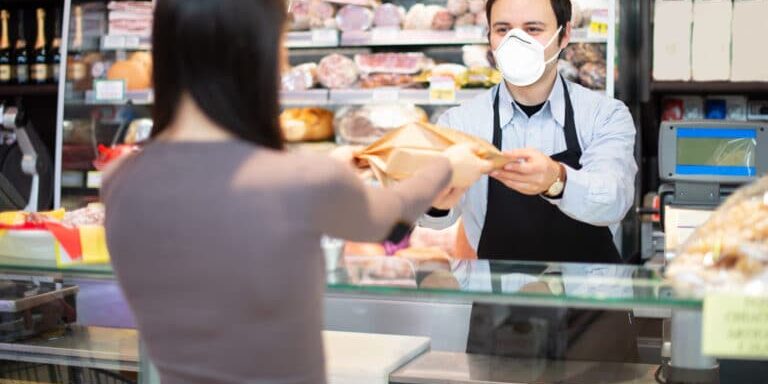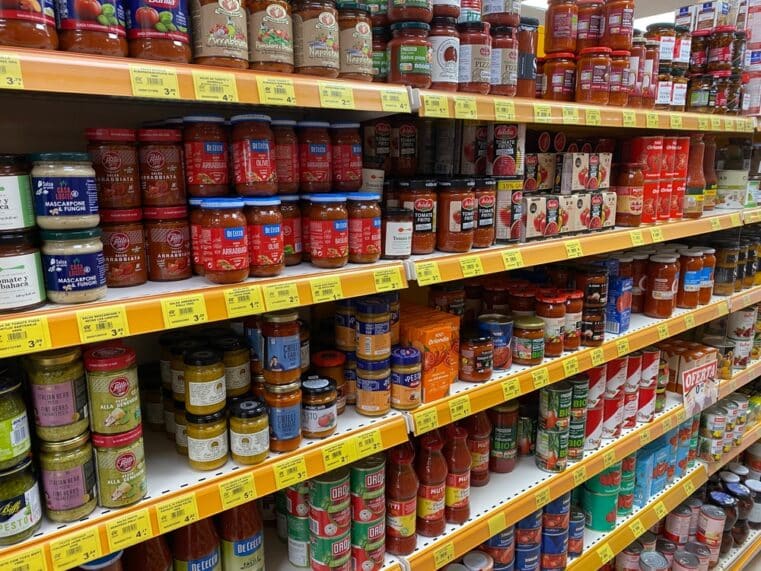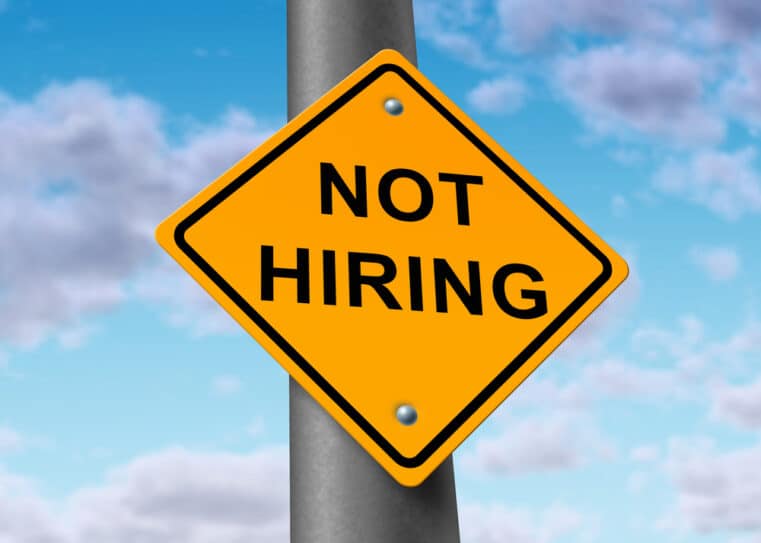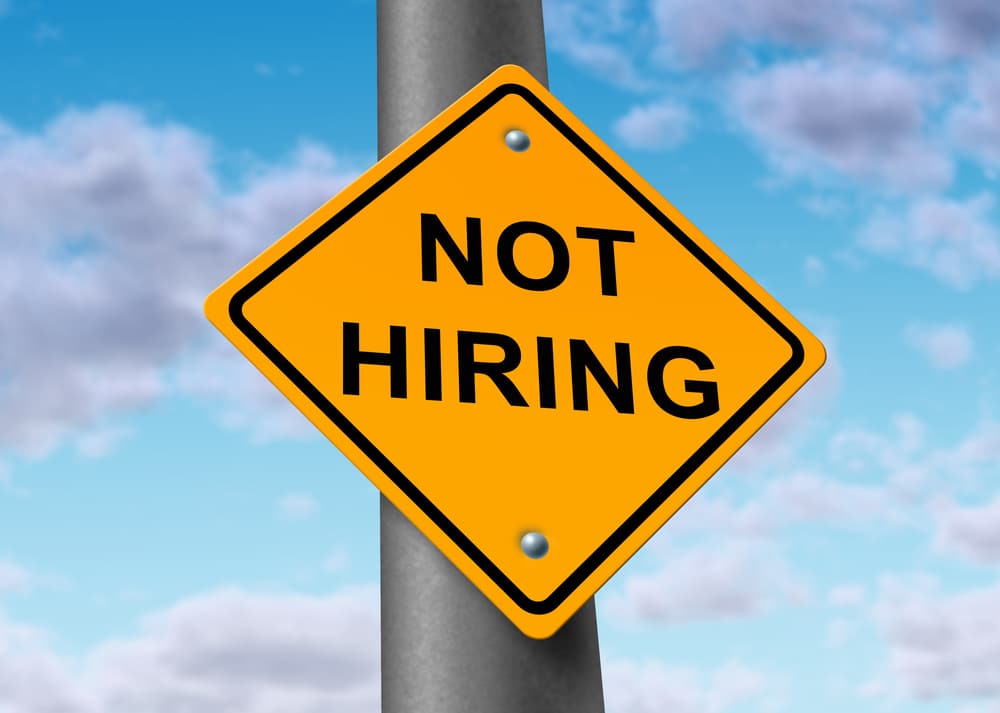
5 Foods That Show How Covid-19 Has Disrupted Market Supply
EDITOR NOTE: With certain food prices rising and generally absent from the shelves of your local grocery store, how is it that farmers have been seen dumping their goods, euthanizing their livestock, allowing crops to rot--in short, massive food “waste” amid food “shortage”? The answer to that might disappoint anyone shopping for food to feed the family: the supply chain can’t switch gears. There’s food for grocery stores and food for restaurants and schools. But can’t they simply switch one to the other--isn’t food for corporate buyers the same for the shoppers? Truth be told, no they can’t and no it isn’t.
Mass euthanasia of livestock, millions of gallons of dumped milk, piles of fresh vegetables left to rot in the sun: Images of farmers dumping their products stand in stark contrast to those showing mile-long lines for food banks. Over 36 million Americans are now unemployed, and food insecurity—which affected one in six Americans before COVID-19—will likely increase. Yet farmers say getting food into the hands of those who need it most is exceptionally difficult and often beyond their control.
The American Farm Bureau Federation estimates that only about eight percent of farms in the United States supply food locally. The rest feed a complex network that ensures restaurants and grocery stores across the country have a steady supply of hundreds of different products.
“What we have is a low-cost and efficient system that allows for huge variety and attention to individual tastes,” says Daniel Sumner, an economist at the University of California, Davis.
The U.S. has two relatively distinct supply chains: one that supplies grocery stores and one that supplies the food service industry. As the latter was forced to close, it left an entire supply chain in limbo.
That’s especially true for these five food staples, which illustrate how the food system became a victim of its own efficiency.
Beef
Demand for beef in supermarkets has risen sharply; sales shot up 92 percent in late March, according to Information Resources, a data company that follows retail sales. But sit-down restaurants and other eateries are only just beginning to re-open after a long shutdown to contain the spread of the coronavirus, which robbed the beef industry of key meat buyers.
According to the National Cattleman’s Beef Association, cattle ranchers face upwards of $13 billion in losses through 2021 as a result of the coronavirus. The hog industry, by comparison, is projected to lose $5 billion.
Ben Brown, an expert in agricultural risk management at Ohio State University, explains that different beef producers cater to different consumers, and it’s very difficult for them to switch markets on a dime. “We say ‘beef is beef, but beef is not beef,’” he says.
Some growers supply export markets; others feed grocery stores, where consumers are more likely to buy cheaper products like ground beef; and some sell to restaurants, where diners are more likely to buy higher-quality cuts, like steak.
Cattle begin their lives on ranches. Most are then bought by intensive animal farming operations called feedlots, where they’re fattened up before being sold to meatpacking plants to be slaughtered. Four large companies—Tyson, Cargill, JBS, and National Beef—process 80 percent of U.S. beef.
It’s at these packing plants where the supply chain is being largely disrupted by COVID-19, the illness caused by the virus. The Food and Environment Reporting Networking says that as of May 15, 15,744 workers across 213 U.S. plants have tested positive.
“This is an industry that’s not used to social distancing,” says Brown. “When you start spreading [employees] out, you slow down the output.”
Cattle raised for ground beef are typically leaner than fatter cattle, which usually fetch a higher price. As Texas Monthly’s Daniel Vaughn reports, many of those fatter cattle are now being ground up in the face of dropping demand for steaks.
Overall, increased demand at grocery stores hasn’t been enough to offset losses from closed restaurants and drops in exports. Brown estimates that for every $10 lost as a result of closed food service establishments, only three dollars is gained in more purchases at the retail level.
Milk
An overall decline in demand for dairy products from schools and the restaurant industry—including cheese, butter, and ice cream—has saddled dairy farmers with more raw milk than they can sell, forcing millions of gallons of milk to be dumped every day.
“On the dairy side, the number one consumer of milk is schools,” says Brown. “It comes in the form of those little cartons. When schools shut down, we saw a strong decline in the consumption of fluid milk.”
Some grocery stores have also limited the amount of milk a single customer is allowed to purchase, a move meant to discourage hoarding. Demand across the country has declined by 12 to 15 percent, according to the Dairy Farmers of America.
“A dairy farm has milk coming out of the cow into a tank. That milk must be pasteurized and packaged, meeting lots of food safety standards,” says Sumner.
Individual farms generally can’t afford the equipment necessary to process milk on site without raising prices significantly. “Nowhere is a dairy farm suited to send milk directly to a store,” Sumner says.
Having specialized processors and packagers keep prices down, but when a global pandemic shuts down large portions of the economy, this production method means dairy farmers who have contracts with one buyer—schools, for example—are still producing large quantities of milk every day while their once reliable buyers cancel contracts.
Brown says bottlenecks happen at packaging centers after milk has been collected and pasteurized. Processing centers that once packaged milk for food service establishments in schools don’t have consumer friendly jugs in stock. And at packaging centers that do bottle grocery store jugs, many operations are already at capacity. Even if farmers are able to switch to retail supply chains, the time it takes to establish those new relationships is also enough time for milk to go bad.
Milk is also being dumped because restaurant demand for products like butter and cheese plummeted. However, the USDA reports that as some states begin to reopen restaurants, demand for those is slowly ticking back up.
Eggs
Demand for eggs spiked in mid-March when states were beginning to roll out stay-at-home orders. That led to grocery store egg shortages even as farmers with contracts to sell to food service establishments struggled to find new buyers.
Unlike milk, eggs are more commonly produced and packaged at the same facility, though some facilities separate production from packaging. At those packaging facilities, eggs are either sorted into the large flats shipped off to restaurants, packaged into 12-count cartons for grocery stores, or turned into a liquid.
And about 30 percent of eggs produced in the U.S. are eventually sold off in liquid form, says Sumner.
A single egg facility might specialize in producing eggs that are turned into liquid and distributed in bulk, but without that large demand, farmers are left with large containers of liquid egg and no way to sell them to grocery stores.
In many cases, the decision to cut losses is made by the large corporations who contract farmers. One liquid-egg farm in Minnesota contracted by Cargill had to euthanize 61,000 chickens because Cargill temporarily shut down its liquidizing plant, and the farm couldn’t just switch to whole-egg sales.
“We had a limiting factor that wasn’t the product itself,” says Brown, meaning both eggs and demand for eggs is plentiful, but the logistical connective tissue was missing. Producers who sell large batches of regular eggs to food service establishments initially faced a shortage of 12-count cartons, notes Brown, but he adds that production has since increased to meet demand.
Potatoes
Potatoes are the most popular restaurant vegetable in the U.S., thanks to all the ways it can be cut, sliced, sautéed, and fried. Like meat and dairy products, demand for potatoes from restaurants sharply declined when in-service dining was reduced.
Some fast food vendors who purchased supplies from farmers before the outbreak have since cancelled their orders, according to Reuters, creating a potato glut in the U.S., with storage freezers stocked full of potatoes.
Idaho supplies most of the market-ready potatoes in grocery stores, whereas farms in Washington state are more likely to grow higher-starch potatoes destined for fryers because they puff up when cooked.
One farm in Idaho began giving away potatoes for free to anyone who would take them, and other farms have followed suit or been forced to plow their fields under.
Leafy greens and other produce
Recent demand for meat and dairy has increased, but leafy greens and other fresh produce haven’t been as popular at grocery stores, says Max Teplitski, the chief science officer at the Produce Marketing Association (PMA) and a former National Geographic explorer. About 60 percent of fresh produce is sold retail; the other 40 percent was taken up by restaurants, he notes.
“Leafy greens are significantly impacted items purchased by schools and hotels,” he says.
When schools, hotels, and restaurants closed, Teplitski says, farmers who had already harvested their crops lacked enough time to find new buyers before their perishable product rots.
“Even if it takes three days to reorient, you’ve lost product,” says Teplitski.
And since harvesting such crops is a huge cost to farmers—“almost as much as the cost of production,” Teplitski says, some farmers have opted to plow the vegetables under.
When asked why farmers couldn’t potentially freeze their produce, Teplitski cites berries as an example of how food is grown with a specific end result in mind.
“Those grown for the fresh market are the biggest, plumpest berries,” which can command top dollar. “The smaller ones get frozen,” he says. “Diverting berries from the fresh market to frozen or jam is a huge [financial] loss.”
Many small-scale farms have successfully pivoted to delivering Community Supported Agriculture (CSA) boxes to consumers on a weekly or monthly basis. Teplitski says this is harder to execute on larger farms that are used to meeting large orders. A CSA system simply wouldn’t be scalable, he says.
Preventing future food waste
The USDA has created the $19-billion Coronavirus Food Assistance Program (CFAP) to provide relief to farmers and ranchers, and a portion of that will send food to food banks, churches, and other non-profits.
While providing immediate relief, CFAP won’t make food supply chains less vulnerable to shortages and waste should another major disruption strike food markets.
At Ohio State University, Brown and other agricultural economists are crafting contingency plans that they hope will help farmers be prepared for future disasters.
This year farmers face a global pandemic, but in 2019, Brown notes, the spring growing season in the Midwest was stunted by historic rainfall, attributable in part to climate change. And in 2018, Midwestern farmers were caught in the trade war with China, with soybean producers hit hardest.
The disasters might be different, says Brown, but “the process and how we think about resilience are the same.”
William Masters, an agricultural economist at Tufts, says the best way to make the food supply chain resilient to a pandemic is to make the economy as a whole more resilient. That, in part, involves reopening food businesses carefully and safely.
In other words, keep demand intact by not letting a virus become so devastating in the first place. By doing everything we can to keep such a virus in check, we’ll protect supply chains, he says.
“It’s to ramp up testing, it’s to trace individuals, and support isolation of those who transmit the virus. It’s the way to have a food system and economy that’s resilient to infectious disease,” Masters says.
Originally posted on National Geographic











